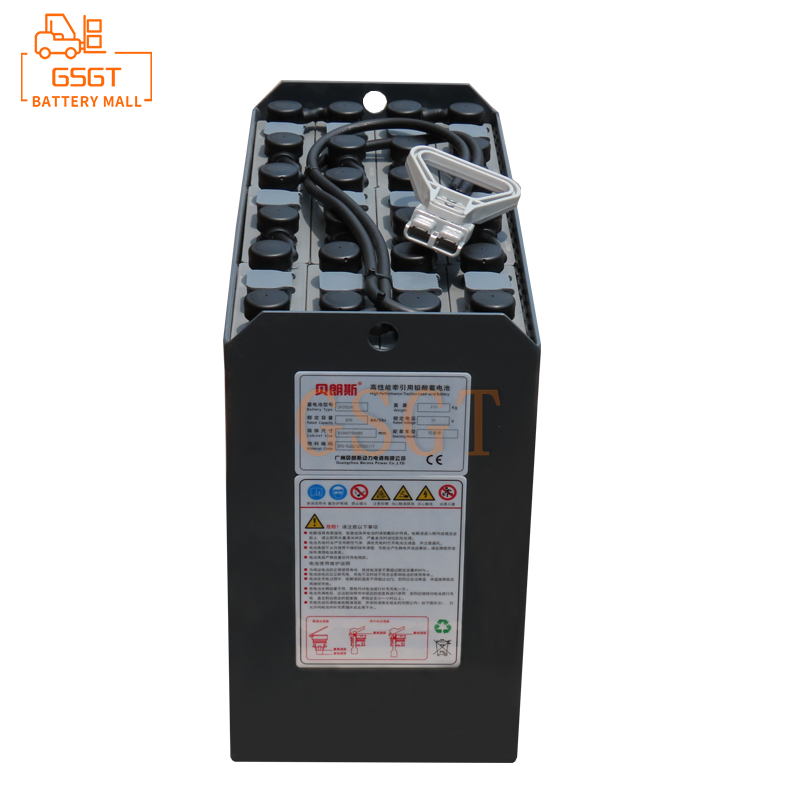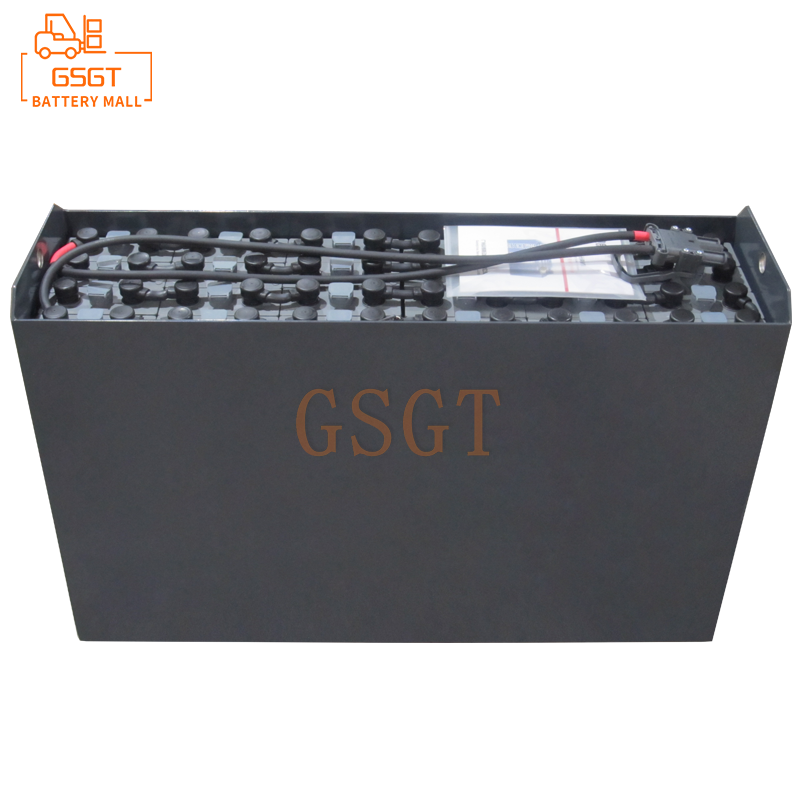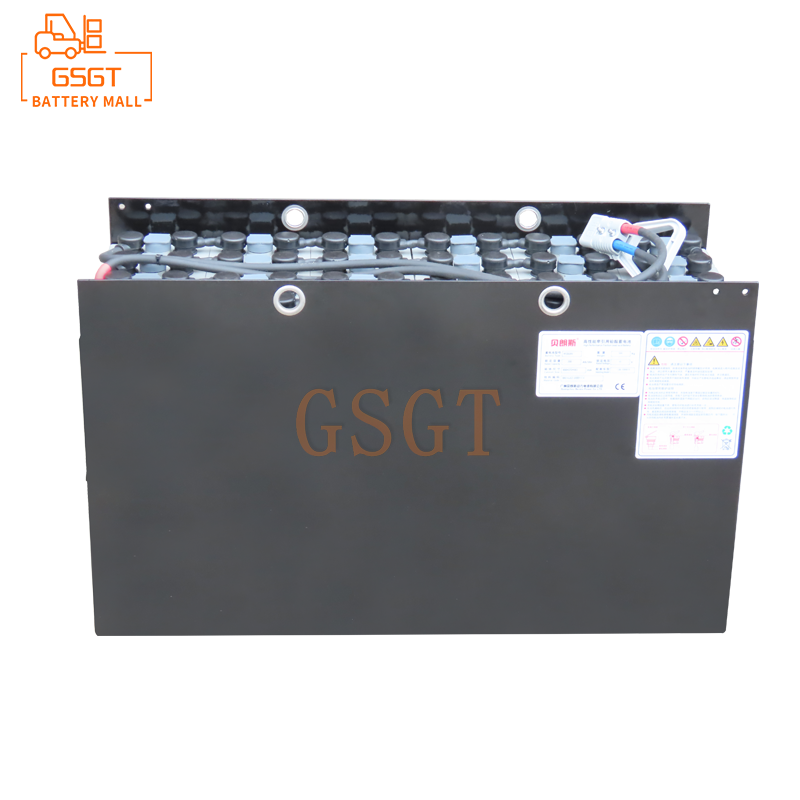Time:2025-07-10 10:46:58
Browse:624
In the daily operation of forklifts, lead-acid batteries are of vital importance, providing continuous power for the equipment. Once the battery malfunctions, it will not only affect the normal operation of the forklift, but also may increase maintenance costs and downtime. Therefore, it is of vital importance to do a good job in the daily maintenance of lead-acid batteries in forklifts. Now, let's take a detailed look at the key items for daily maintenance.
Electrolyte level inspection and replenishment
Electrolyte is an important medium for the normal operation of lead-acid batteries, and its liquid level directly affects the performance and lifespan of the battery. During daily maintenance, the electrolyte level needs to be checked regularly.
The correct inspection method is: Open the battery's liquid filling cap and observe whether the electrolyte level is 10 to 15 millimeters above the plates. If the liquid level is lower than this standard, distilled water needs to be replenished in time. It should be particularly noted here that tap water or electrolyte must not be added. Tap water contains various minerals and impurities, which can contaminate the electrolyte and affect the chemical reactions of the battery. However, adding electrolyte will cause the concentration of the electrolyte to be too high, accelerating the corrosion of the plates.
When replenishing distilled water, it should be poured in slowly to prevent the electrolyte from overflowing. After the replenishment is completed, the liquid filling cap should be tightly closed to prevent dust and other impurities from entering. It is recommended to check the electrolyte level at least once a week. In high-temperature environments or when forklifts are frequently used, the frequency of checks should be increased.
Charging management
Scientific and reasonable charging is the key to extending the lifespan of lead-acid batteries in forklifts. During the charging process, the following points should be noted.
First of all, it is necessary to strictly select the appropriate charger in accordance with the requirements of the battery's manual. Batteries of different models and capacities require different charging parameters. Using an mismatched charger can lead to undercharging or overcharging, both of which can cause damage to the battery.
Secondly, it is necessary to master the correct charging time. Under normal circumstances, when the battery level of a forklift drops to 20% - 30%, it should be charged in time to avoid over-discharge. Excessive discharge can cause sulfation of the plates, reducing the capacity and lifespan of the battery. The charging time should not be too long. Once fully charged, the power supply should be cut off in time. Generally, the charging time is about 8 to 10 hours. If the charging time is too long, it will cause the electrolyte to boil, the water to evaporate too quickly, and may also cause the plates to deform.
Besides, the charging environment is also very important. Charging should be carried out in a well-ventilated, cool and dry place. Avoid charging in direct sunlight, high temperatures or environments with open flames. At the same time, during the charging process, do not open the battery's liquid filling cap to prevent the electrolyte from splashing and injuring people or corroding the equipment.
Cleaning and maintenance
Keeping the battery clean and hygienic can effectively reduce the occurrence of faults. When cleaning the battery, the positive and negative connection wires of the battery should be disconnected first to avoid short circuits.
The casing, electrode posts and connecting wires of the battery can be wiped with a damp cloth to remove dust, oil stains and oxides on the surface. If there are oxides on the electrode posts and connecting wires, they can be cleaned with a wire brush. After cleaning thoroughly, apply a layer of vaseline on the electrode posts to prevent re-oxidation.
During the cleaning process, be careful not to let water enter the interior of the battery. After cleaning is completed, wait for the surface of the battery to dry before reconnecting the positive and negative terminal connection wires. When connecting, make sure the connection is firm to avoid loosening and poor contact. It is recommended to clean the battery at least once a month.
Frequently Asked Questions and Answers
Question: Why does the lead-acid battery of a forklift overheat severely during use?
Answer: The severe heating of lead-acid batteries in forklifts during use may be caused by various reasons. One is that the charging time is too long, causing the temperature of the electrolyte to rise. The second reason is an internal short circuit in the battery, which causes excessive current and generates a large amount of heat. The third reason is that the forklift is overloaded and discharges at a large current for a long time. Fourth, the aging or damage of the battery plates affects the normal chemical reaction, causing overheating. If the battery is found to be overheating severely, its use should be stopped immediately and the specific cause checked. If it is a charging issue, the charging time and charger parameters should be adjusted in a timely manner. If it is an internal fault or a problem with the plates, professional personnel should be contacted for repair or replacement.
Question: How to determine whether the lead-acid battery of a forklift needs to be replaced?
Answer: Whether the lead-acid battery of a forklift needs to be replaced can be determined through the following aspects. First, the capacity of the battery has significantly decreased, and the driving range of the forklift has been greatly shortened. Even after being fully charged, it still cannot meet the normal working requirements. The second is that during the charging process of the battery, the electrolyte boils too early, or the charging time is significantly shortened, and the battery runs out of power very quickly after being fully charged. The third is that the plates of the battery show obvious deformation, corrosion or sulfidation. The fourth issue is that the battery casing has cracked or leaked. When the above situations occur, it indicates that the battery has aged or been damaged and needs to be replaced in a timely manner.
In conclusion, the daily maintenance of lead-acid batteries for forklifts is a meticulous and crucial task. Only by doing a good job in key items such as checking and replenishing the electrolyte level, charging management, and cleaning and maintenance can we ensure that the battery is always in good working condition, extend its service life, reduce operating costs, and improve the working efficiency of forklifts.

$880

$2530

$3400

$2040

MESSAGE
Professional And Efficient
Security
Affordable Price
Professional Services